History of Vasai
The history of Bassein dates back to Treta Yuga. Bassein (or Vasai or Oppire or Orparak or Shorparag or Shurparaka as it was called from time to time) was established by Bhagawan Parashuram. Bhagvan Parsuram established Vimaleshwar Mandir and Vimala Sarovara. He established the 64 yoginis in and around Vasai, since the yoginis were considered to be the devotees of His mother Goddess Renuka. He also established 108 Teertha Kundas or Pushkarinis in Vasai. This is quoted in the Holy Edict Skanda Purana and Padma Purana (Lotus Purana ).
Shamedis came as expert singers to Shurparak (Bassein) during the Buddha era 1500 BC from the remote areas of Orissa, then called as Utkala. During the Buddhist rule, their following of Vedic Dharma was loosened. At the advent of Adya Shankaracharya in Nirmal around 497 BC, the Buddhist Monks were defeated in the debates and returned to the Vedic Fold. Hinduism in the Samedis returned and they started strict following of the Vedic Dharma. They regarded Adi Sankara Jagadguru as their cardinal preacher. This is quoted in Holy Text Siva Leela Amrut.
Purna, the disciple of Gautama Buddha, belonged to “Vasai” i.e. earlier “Shoorparak”, and he preached in the Eastern India. Even after the advent of Sankaracharya, some Buddhists were left who used to criticize the Vedic Philosophy. Thus the King Jalauk of Kalinga took the then Jagat Guru Shankaracharya of Eastern India, i.e. H.H. Shankaracharya of Puri, to Shurparaga. He was 5th Shankaracharya of Puri named Swami Vidyaranya. His Holiness Swami Vidyaranya defeated remaining Buddhist Monks from Karla Caves, Mahad Caves, Kaneri Caves, and Shruparak and strongly revived the Vedic Dharma. Dur to old age and at the earnest prayers of the local Shamedis and Bhandaris Jagad Guru Shankaracharya Vidyaranya Swami of Puri Peetham took Mahasamadhi at the Nirmal Vimaleshwar Mandir in 404 BC on the dark 11th day of Kartik. Emperor Jalauk (son of Ashoka) built a big Samadhi Mandir according to the Orissa architecture.
Later during the Vijaya Yatra the grand disciple of Swami Vidyaranya, named Swami Padmanabha Tirtha, the 7th Jagadguru Sankara charya of Puri Govardhan Peetham arrived in Vasai during the “Vijaya Yatra” . His Holiness stayed here for some months and later attracted to this Holy Place decided to reside eternally at this place of his grand Guru.
Thus Swami Padmanadha Tirtha Shankaracharya, who was devotee of Lord Vallabha (thus He was also called Vallabha Swami) (i.e. Krishna achieved Mahasamadhi at Vasai in 373 BC on a hillock next to the Nirmal hillock. A temple devoted to Lord Krishna in front of His Samadhi by the then Kashmiri Brahmin community who used to reside in Nirmal, brought by Raja Jalauk, from the area around Shankaracharya Parbat, Sri Nagar (Jammu and Kashmir).
Later this place was visited by 38 th Shrimad Jagadguru Shankaracharya Swami Shivananda Saraswati of Puri Govardhan Peetham during the rule of the Satvahan Kings.
During the times of Raja Bhimdev of Puri, in order to solve the religious difference in between the Kshatriyas, the 106 th Jagadguru Shankaracharya Swami Sukhabodha Tirtha arrived in Vasai during the 13th century AD.
This Holy place was visited by Swami Vidyaranya, the 13th Shankaracharya of Sringeri Sharada Peetham in the 15th century. His samadhi is located at Hampi, Karnataka.
During 1543, Portuguese started their rule in Bassein and started destruction of various cultural places in Vasai. The temple of Padmanabha Swami which was located at the hillock place now called “Nirmal Naka” was destroyed. The Brahmins, Shamedis and Bhandaris who regarded Jagadguru Shankarachrya as their Holy Guru were sad at this ill act and they brought the stones of the samadhi of Padmanabha Swami and placed them in front left hand side of Vidyaranya Swami Samadhi Mandir. During this period, 200 religious places were destroyed by foreigners in Bassein. The atrocities of the Portuguese were on rise .At the request of the Citizens of Vasai Chimaji Appa Peshwa attacked Portuguese at Vasai and conquered Vasai in the 18th Century AD.
He requested the guidance of monk – Swami Vidya Shankara Bharati who was the 8th generation of the institution of Karvir- Sankeshwar (this is the institution established in the 16th century in Sankeshwar, Karnataka). He was the disciple of Jagadguru Shankaracharya.
At the guidance of Swami Vidya Shancara Bharati, Chimaji Appa renovated, in the Orissa Architecture, the Samadhi Mandir of Swami Vidyaranya and Swami Padmanabha Tirtha, the 5th and 7th Shankaracharya of Puri Peetham,.
This place due to atrocities of Portuguese rulers were devoid of Brahmins. Under the guidance of Swami Vidya Shankara Bharati, Chimaji Appa Peshwa, in consultations with Peshwa Bajirao, appointed 1 Konkanastha Chitpavan Brahmin, 1 Karhade Brahmin, 1 Devrukhe Brahmin and 4-5 Shukla Yajurvedi Gujrathi Brahmins in this region. Thus there were only 7-8 houses of Brahmins in whole Sopara region. Later Swami Vidya Shankara Bharathi went back to Sankeshwar and attained samadhi on the banks of River Hiranyakeshi.
In 1926, Swami Bharati Krishna Tirtha, the 143rd Jagadguru Shankaracharya of Puri Govardhan Peetham was received with warm welcome in a specially reserved train at Nala Sopara station.
The Jagadguru Swagat Samiti was presided by a well known Shamedi Shri Vaze. Jagadguru had the Holy bath in the Vimaleshwar Sarovar then had Darshan of the Shri Sureshwar Mandir, Shri Vimaleshwar Mandir, and the two Samadhis of the previous Shankaracharyas viz. Swami Vidyaranya and Swami Padanabha Tirtha of the Puri Govardhan Peetham. This time Jagadguru addressed a large gathering of Shamedis. A big Yajnya was organized to commemorate this event. Again the same Puri Shankaracharya Swami Bharati Krishna Teerth visited Shurparak in the 1950s. This time also there were huge gatherings which were hosted by Swami Nityananda of Ganeshpuri. This time also Shamedis extended great efforts in organizing the event.
Ishwarpuri (Sandipani Samadhi)
Way to Ishwarpuri
shiva temple ishwarpuri
Courtesy: http://discoverindiabyroad.blogspot.in/2011/07/ishwarpuri-sandipani-samadhi-chandip.html
Also courtesy: wikipedia

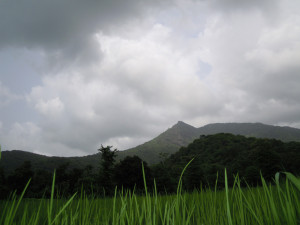
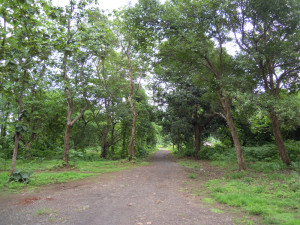
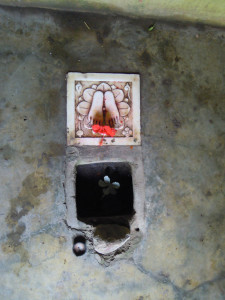
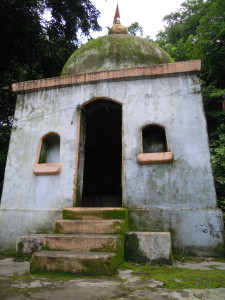
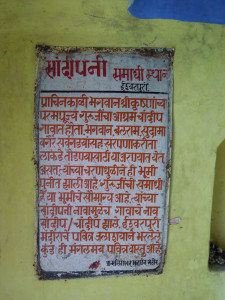
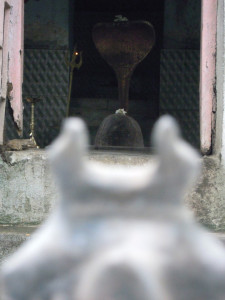
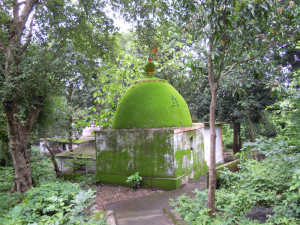
Sandipani Samadhi Sthal is superly divine place. It has the divine aura all around it. Visiting the sacred place with Guruji Sundar was a memorable one. The Priest and other people at the Temple were very warm and courteous. After spending almost an hour there, Guruji felt like having Tea and the Priest got it made in the Kitchen for all of us.
Jai Sandipani Muni, Jai Krishna, Jai Mahadev, Jai Guruji Sundar!!
Hello, Sudharsun. I am a filmmaker and I am working on a documentary of Vasai. Is there any way to contact you? Would love to have a word.